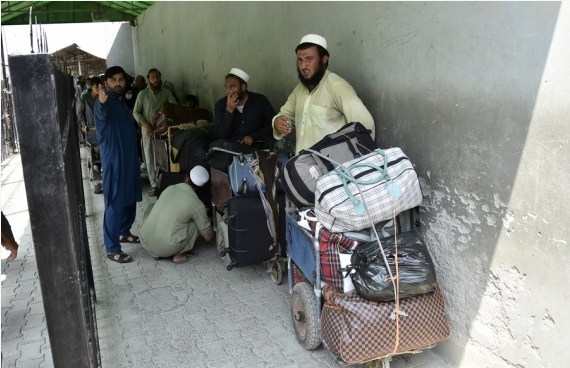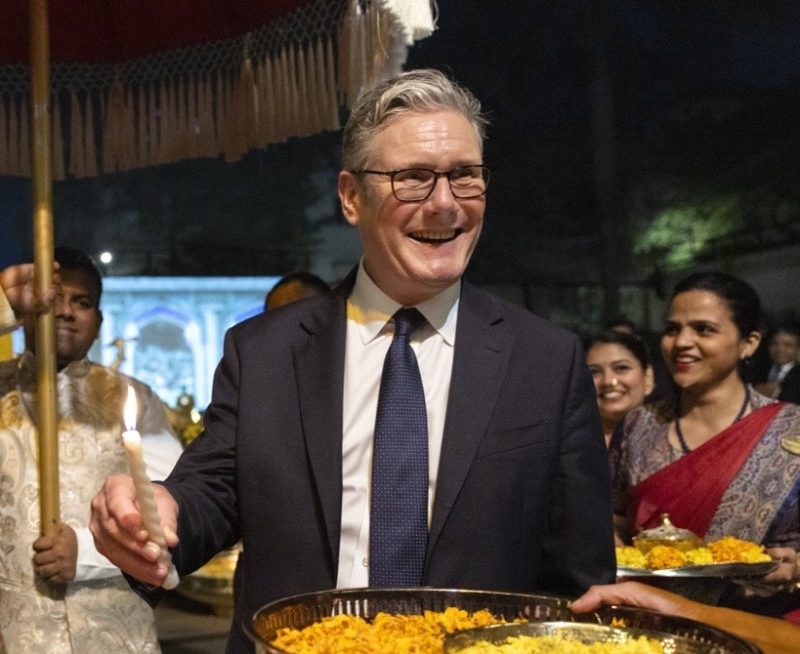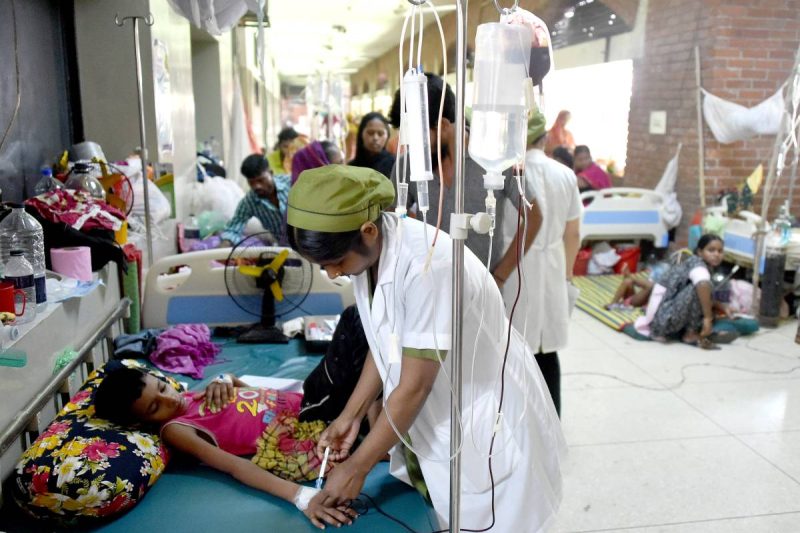Foreigners and domestic tourists are back in Jamuu and Kashmir. Foreign tourist arrivals have skyrocketed by 700%, signalling a revived sense of safety and security. This tourism resurgence not only bolsters the local economy but also fosters cultural exchange, nurturing tolerance and rekindling the region’s syncretic heritage… writes Sunanda Garain
The Union Territory of Jammu and Kashmir is experiencing a renaissance in tourism, heralding a new era of prosperity. In the first seven months of 2023, the region welcomed an astounding 12.7 million tourists, an unprecedented milestone in India’s 75-year history. This surge, expected to reach 22.5 million by year-end, surpasses the previous record of 18.8 million tourists in 2022.

Remarkably, foreign tourist arrivals have skyrocketed by 700%, signalling a revived sense of safety and security. This tourism resurgence not only bolsters the local economy but also fosters cultural exchange, nurturing tolerance and rekindling the region’s syncretic heritage. The G20 meeting held in Kashmir has played a pivotal role in attracting global tourists, debunking false narratives, and promoting peace. With infrastructure improvements and strategic projects, Jammu, Kashmir, and Ladakh are poised to become premier global tourism destinations, ushering in prosperity, stability, and development.
The G20 meeting played a pivotal role in rejuvenating tourism in the picturesque region of Kashmir. Once celebrated for its pristine landscapes and verdant valleys, Kashmir had been a favoured destination for both domestic and international tourists during the 1960s and 1980s. Unfortunately, the peace and serenity were disrupted in 1989 when Pakistan and its clandestine agencies initiated armed conflicts and acts of terrorism in the region. This involved infiltrating a multitude of militants and misleading certain vulnerable Kashmiris into joining the insurgency.
However, since August 2019, there has been a significant positive shift in the security situation within the Kashmir Valley. The presence of terrorists has remarkably diminished, and the troubling incidents of “quasi violence,” such as stone pelting and strikes—often instigated by Pakistan—have dwindled, particularly after 2021. Notably, the people of Kashmir, particularly the youth, stand at the threshold of a profound transformation in their outlook towards Pakistan and its policy of terror in the region. This transformation is exemplified by the fact that only 25 young individuals from Kashmir have joined militancy in the current year, a stark contrast to the 143 in 2019 and 100 in 2022.
Furthermore, out of the 46 terrorists eliminated in the region, a mere 9 were locals, while the remaining 37 were Pakistani nationals. This marks the first time in over three decades of militancy that the number of foreign terrorists neutralized has exceeded that of locals. Importantly, 29 of these terrorists met their fate in the southern region of Pir Panjal, near the Pakistan border, signifying Islamabad’s frustration and the changing security landscape in the Valley.
The surge in tourists, particularly from Muslim-majority nations, has dismantled Pakistan’s false accusations of human rights violations in Kashmir by New Delhi within the Muslim world. The increased influx of tourists vividly illustrates the evolving ground reality, especially the shifting perceptions of the youth toward New Delhi, both economically and politically.

Taking advantage of its G20 presidency, New Delhi showcased the abundant tourism potential of the Valley to affluent global economies. On May 22, the Third G20 Tourism Working Group (TWG) convention organised in the Kashmir Valley, with a focus on promoting green, inclusive, and resilient tourism development. This gathering enabled the UT administration to glean insights from global best practices for achieving Sustainable Development Goals (SDGs) and compelled several countries to revise their travel advisories.
Kashmir, often hailed as the ‘paradise on earth,’ hosted a momentous G-20 event in its picturesque capital, Srinagar, in May 2023. This prestigious gathering had spurred extensive infrastructural advancements, encompassing road renovations, beautification endeavours, and enhancements to drainage systems. The G-20 forum, representing a staggering 85% of global GDP, over 75% of international trade, and housing two-thirds of the world’s populace, including the most affluent and influential nations, organizations, and leaders, marked a significant milestone. That year, esteemed guest countries included Bangladesh, Egypt, Mauritius, Netherlands, Nigeria, Oman, Singapore, Spain, and the UAE.
Under India’s G-20 Presidency, the theme, “Vasudhaiva Kutumbakam” (one earth, one family, one future), underscored environmental sustainability, paving the way for a cleaner, greener, and more sustainable future. The event encompassed various engagement groups like Business20, Labour20, Parliament20, Science20, SAI20, Think20, Urban20, and a ground-breaking Startup20 engagement group, acknowledging the pivotal role of start-ups in driving innovation. A novel working group focused on Disaster Risk Reduction aimed to foster collaboration, interdisciplinary research, and the exchange of best practices. The University of Kashmir played host to the Y-20 and C-20 events, addressing gender equality and disability (GED) and fostering dialogues with stakeholders from eight nations in hybrid mode. The goal was to shape actionable policies for the G20 summit, with panel discussions spanning legal reform, public platforms, school curricula, gender sensitization, and youth mentorship.

Jammu and Kashmir, as a newly-formed union territory, had made remarkable strides in education, healthcare, and power, with a pronounced focus on youth empowerment. Key accomplishments included the establishment of 50 new degree colleges, seven medical colleges, five nursing colleges, and a state cancer institute. Programmes had been instrumental in providing skill-based training to dropouts, with 70% finding gainful employment. The Integrated Dairy Development Scheme had transformed over 40,000 women into millionaires. The Prime Minister’s Employment Generation Programme (PMEGP) had created a substantial 62,808 jobs across diverse sectors. J&K was now officially Open Defecation Free and proudly boasted renowned institutions like IIT and IIM. Infrastructure projects spanned public works, water management, power development, higher education, health, housing, urban development, and tourism. These encompassed road and highway construction, flood management, water supply schemes, urban revitalization, and multiple MSME initiatives.
The third G-20 tourism working group meeting, which unfolded in the Kashmir Valley, convened delegates from G-20 countries, guest nations, and international organizations such as the UN, World Bank, IMF, WHO, WTO, ILO, FSB, OECD, ASEAN Chair, and ISA, alongside global leaders. These delegates explored the region’s foremost tourist attractions and film tourism potential, aiming to attract film productions through streamlined approvals and enhanced facilities. Stringent security measures, including Special Forces and cutting-edge anti-drone technology, were implemented to ensure a seamless and secure event. In anticipation of the G-20 gathering, Srinagar underwent a profound transformation, with heritage structures resplendently illuminated in the tricolour, and crucial intersections underwent refurbishment.
The G-20 meetings on the picturesque canvas of Jammu and Kashmir amplified global recognition, heightened investments, and a flourishing tourism industry alongside vibrant handloom and handicrafts sectors. By addressing living standards within the region, this event broadcasted a resounding positive message across the globe, igniting Kashmir’s tourism sector as a potent catalyst.
The G20 meeting held in Kashmir led to a significant upsurge in foreign tourists, predominantly from Europe, the Middle East, Malaysia, and Thailand. The notable increase in tourists hailing exclusively from Muslim-majority countries has exposed Pakistan’s baseless allegations of human rights violations in Kashmir by New Delhi, particularly within the Muslim world. A notable moment occurred on August 4, 2023, when British Arab influencer Amjad Taha visited Kashmir and was deeply impressed by “India’s peace initiatives” in the Valley. This visit served as a testament to the positive changes and opportunities that have unfolded in the region.
Pakistan is currently grappling with a host of political and economic difficulties, whereas Kashmir is emerging as a top-tier destination for both domestic and international tourists. This is presenting the local Kashmiri youth with a myriad of economic prospects. The tourism sector contributes to around 7-8 percent of the Union Territory’s (UT) GDP, yielding an annual revenue exceeding INR 80 billion. This revenue not only bolsters the local economy but also spurs employment, directly or indirectly, particularly among the youth. In response to the growing tourist demand and alignment with the United Nations Sustainable Development Goals (SDGs), the government has initiated a homestay program, offering special assistance to each unit. This year, there has been a significant rise in registered homestays, with the government committed to adding 55,000 rooms through this initiative. To illustrate, in the districts of Baramulla, Kupwara, and Bandipora, there are presently 250 registered homestays offering 900 rooms.

It is imperative for the UT administration to showcase Kashmir’s tourism potential on the global stage, with a specific focus on regions like the Middle East, Europe, and the United States (US). The administration is also championing 75 new pristine destinations to allure more high-end tourists. Nevertheless, apart from Pahalgam, Gulmarg, and Sonamarg, most other destinations require improved basic tourism infrastructure, including amenities like mobile connectivity, electricity supply, and public restrooms. Take, for example, the Gurez Valley, just 125 km away from Srinagar, which is in need of proper infrastructure, particularly electricity, public facilities, and roads. Despite the UT implementing new policies to develop eco-friendly infrastructure and maximize tourism potential, there remains a pressing need for additional tourism-related infrastructure.
New Delhi must also prioritize the creation of more economic opportunities and the expeditious completion of connectivity projects. These include the expansion of railway networks and the conversion of the strategic 295 km NH44 into a four-lane road. These two pivotal connectivity initiatives are vital for economic growth, particularly in the horticultural sector and tourism. The previous year, road closures due to landslides and geological instability led to widespread protests by fruit growers and merchants, resulting in a staggering loss of over INR 1,500 crores to the apple industry, which forms the backbone of Kashmir’s economy. The Kashmir Valley is responsible for approximately 75 percent of India’s apple production and contributes around 8.2 percent to the UT’s GDP. The successful execution of these critical connectivity projects will help control surging airfares during peak tourist seasons and bring about a transformation in the tourism and horticulture sectors. Moreover, it will foster economic and ideological integration, necessitating heightened vigilance and strategic measures against Pakistan’s disruptive agencies and evolving terror policies by both security forces and the local Kashmiri population.
While more than four years have passed since the momentous decision by the Government of India to abrogate Article 370, the region has undergone significant changes. Plagued by separatism, cross-border terrorism, and insurgency, the region has never received the requisite support to evolve into a prominent global tourism hub. However, with the vision of transforming Jammu, Kashmir, and Ladakh into world-renowned tourism hubs, the sector is experiencing a resurgence.
The completion of the Chenab Bridge, a marvel costing Rs. 1,327 crores under the Udhampur-Srinagar-Baramulla Rail Link Project, marks a transformative moment. In tandem, a comprehensive corridor network within the picturesque Kashmir Valley is on track for completion within the next four years. The Government of India has left no stone unturned, channelling substantial efforts into enhancing the region’s infrastructure to captivate both locals and visitors. This multifaceted approach has catalysed a remarkable surge in tourist activities, underpinned by improved law and order, robust security measures, and a peaceful ambiance, all complemented by upgraded connectivity and infrastructure. The Kashmir Valley, now a global tourism magnet, particularly benefits traders, small businesses, and the working class. The introduction of international flights has capitalized on this period of tranquillity, bolstering tourism further. Beyond leisure pursuits, religious tourism within the Union Territory enjoys smooth and secure operations.
To ensure sustained growth throughout the year, the government has adopted a comprehensive socioeconomic development model, penetrating deep into block-level areas. This macroeconomic strategy aims to generate 5-6 lakh jobs, igniting momentum for additional capital investments in manufacturing and services. Noteworthy achievements include the iconic Tulip Garden of Kashmir, setting records with an unprecedented number of visitors during its opening week, making it the most-visited garden in Asia. Concurrently, the administration has orchestrated captivating experiences for tourists exploring the Kashmir Valley, with a special focus on the enchanting Manasbal Lake in Ganderbal. Here, a festival showcases local art, culture, cuisine, and water sports, further enhancing the region’s allure.
(Ms. Sunanda Garain is a doctoral fellow at Mahatma Gandhi Central University, Motihari, Bihar. She has recently conducted fieldwork in Kashmir)









